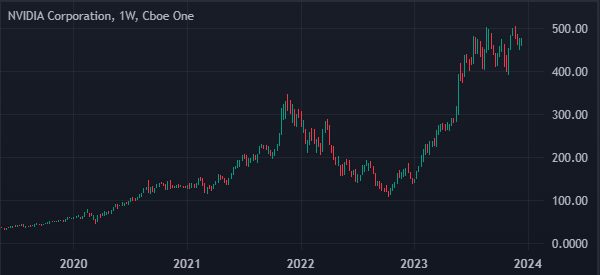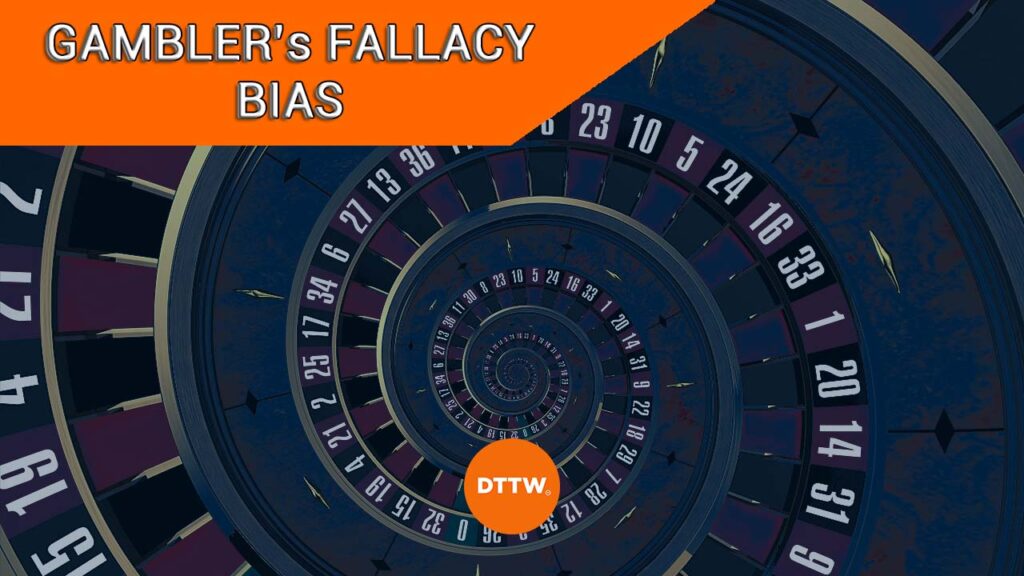Psychology is an important part of the financial market. One way in which psychology is shown is through different types of biases that traders go through on a regular basis.
Examples of these biases are:
- Optimism and pessimism
- Anchoring
- Herding
- Status quo
- Loss aversion
among others.
This article will look at the important concept known as gambler’s fallacy, which most traders and investors go through without even realizing it. We will explain what it is, how it applies in the market, and some of the ways to avoid or overcome it.
Table of Contents
What is the gambler’s fallacy?
The concept of the gambler’s fallacy is rooted in the idea of probability. While the concept was developed in the gaming and gambling industries, it is also widely applicable in the financial market whether you are a trader or an investor.
Gambler’s fallacy is the assumption that an event that occurs repeatedly over time will be less likely to happen in the future.
Related » Gambling Strategies to Bring Stock Trading Success
The best way to think about it is a situation where you toss a coin ten times. In all these periods, the coin lands with its heads up, you may assume that the coin will land with tails on top.
While this assumption may be correct, the reality is that the possibility is 50-50. In this case, the coin can land in either the head or the tail section. Therefore, using the gambler’s fallacy in trading could lead to some substantial losses.
Another example of the gambler’s fallacy is a family that gets three baby girls in a row. In this case, they could assume that the next baby will be a boy. Again, the reality is that the fourth baby could be a male or female.
The psychology of the gambler’s fallacy
The concept of the gambler’s fallacy is rooted in a psychological situation known as cognitive bias. Cognitive bias is defined as the systematic error in thinking that happens when people are processing and interpreting information of all kinds.
There are many examples of cognitive biases around us. For example, most people often buy products that are advertised on TV by authoritative figures since they believe that they did their research.
Another example is when people guess a person’s gender based on their profession. In most cases, people associate nurses with women and carpenters with men.
The gambler’s fallacy is created using the same concept. In it, people assume that an outcome will even out in a certain period. Another way of explaining the fallacy is using the genstat approach, which uses the belief that an upcoming independent random event will be connected to the previous one.
Gambler’s fallacy in trading and investing
The gambler’s fallacy is widely applied in trading and investment. In most cases, people use this method without even knowing it.
There are several ways in which this approach works in the market. The most popular one is where a person shorts a stock that has been in a strong upward trend for three months in a row.
In this case, the trader believes that the most likely scenario is that the shares will drop in the next month. In this case, while the trader may be correct to assume that, the reality is that the stock may continue moving in the original trend.
Therefore, traders and investors should always do more research when making their decisions on whether to buy or sell an asset.
Examples of gambler’s fallacy in trading
There are many examples in which the idea of the gambler’s fallacy is found in the market. The first one is shown below.
In it, we see that Nvidia shares jumped for seven straight months in 2023. That really happened as investors became thrilled by the strong growth of artificial intelligence.
Therefore, a trader can come in and assume that the shares will drop in the next month. In this, they will assume that the stock has become overbought and that initial buyers will start exiting the trade.
However, in this case, the reality is that the stock could continue rising as well.

The other example of gambler’s fallacy in the market relates to a company’s earnings. These are important figures since many investors and traders use them to initiate trades.
If a company beats on revenue and earnings four times in a row, a trader can assume that it will miss in the next one.
Third, there is a case in which a company constantly outperforms its competitor. Take similar companies like Exxon and Chevron or Visa and Mastercard. An investor can assume that the other company will outperform the previous one in the future.
Cons of the gambler’s fallacy
While the gambler’s fallacy can work well for you, the reality is that it has some important cons or disadvantages of the fallacy.
Closing a trade prematurely
This is one of the most popular con of using the gambler’s fallacy when day trading or investing. It happens when a trader closes a trade prematurely.
In this, the trader assumes that the profit-making trade will turn around. As such, the trader takes a small profit with the goal of avoiding a bigger loss.
This view can be solved by using a trailing stop, which is a form of stop-loss that captures initial profits. As such, even if there is a big reversal, your initial profits are maintained.
Avoid buying or selling an asset
The other con of the gambler’s fallacy is that traders often avoid buying an asset that is rising or shorting one that is falling.
A good example of this is the Nvidia example shown above. Some traders and investors avoided buying the stock as they assumed that it would retreat. And by doing so, they avoided taking part in a major stock rally.
Related » Don’t Be Married to Your Stock
Going against the trend
Further, the gambler’s fallacy can see a trader or an investor go against the trend. Again, in the example above, a trader could implement a short trade in their assumption that the stock will start falling.
In some cases, going against the trend can lead to substantial losses, as we have seen with companies like Tesla and Nvidia.
Hold a losing position for long
Another fatal flaw of the gambler’s fallacy is a situation where a trader with a loss-making trade holds their positions for too long.
This happens as these traders wait for a reversal. In most cases, a loss-making trade can continue adding more losses, leading to a margin call.
Related » How to Cut Trading Losses
Ignoring fundamentals
Finally, the gambler’s fallacy can see a trader ignore fundamentals data of a company or other asset.
In this, if a stock is soaring, they ignore the fundamental reasons why they are rising and short it hoping that it will reverse.
How to overcome the gambler’ fallacy
There are several ways of avoiding the gambler’s fallacy, including:
Combining fundamentals with technicals
One of the best ways of avoiding the gambler’s fallacy is to always combine a company’s fundamentals with technicals.
The technical approach look at a chart while the fundamentals looks at the key factors affecting a stock. For example, in the case of Nvidia, the stock jumped because of demand for AI chips.
Keep a trading journal
A diary is an important tool that all traders and investors should have. It is a document where you write all details about your trades.
For example, you can write down the trades you have made, the reason for executing the trade, and your profit and loss. If you use the journal well, there is a likelihood that you will avoid repeating the mistake in the future.
Develop a strategy and stick to it
The final thing to do is to always have a trading strategy and stick with it. When you have a good strategy, you will always know when to enter a position and when to stay away.
You should develop and retest your strategy as you start your trading journey. To prevent losing money while testing, we strongly recommend that you rely on a demo platform. By joining Real Trading, for example, You would have access to our demo account.
Summary
In this article, we have looked at the concept of gambler’s fallacy and explained what it is. We realized the ease of falling into the trap of this state of mind, which is not limited to trading alone.
Most importantly, we have explained the psychological beginnings of the strategy and how it applies in the financial market. But we also analyzed and explained some of the top ways to avoid the fallacy.
External useful resources
- Who “Believes” in the Gambler’s Fallacy and Why? – National Library of Medicine



